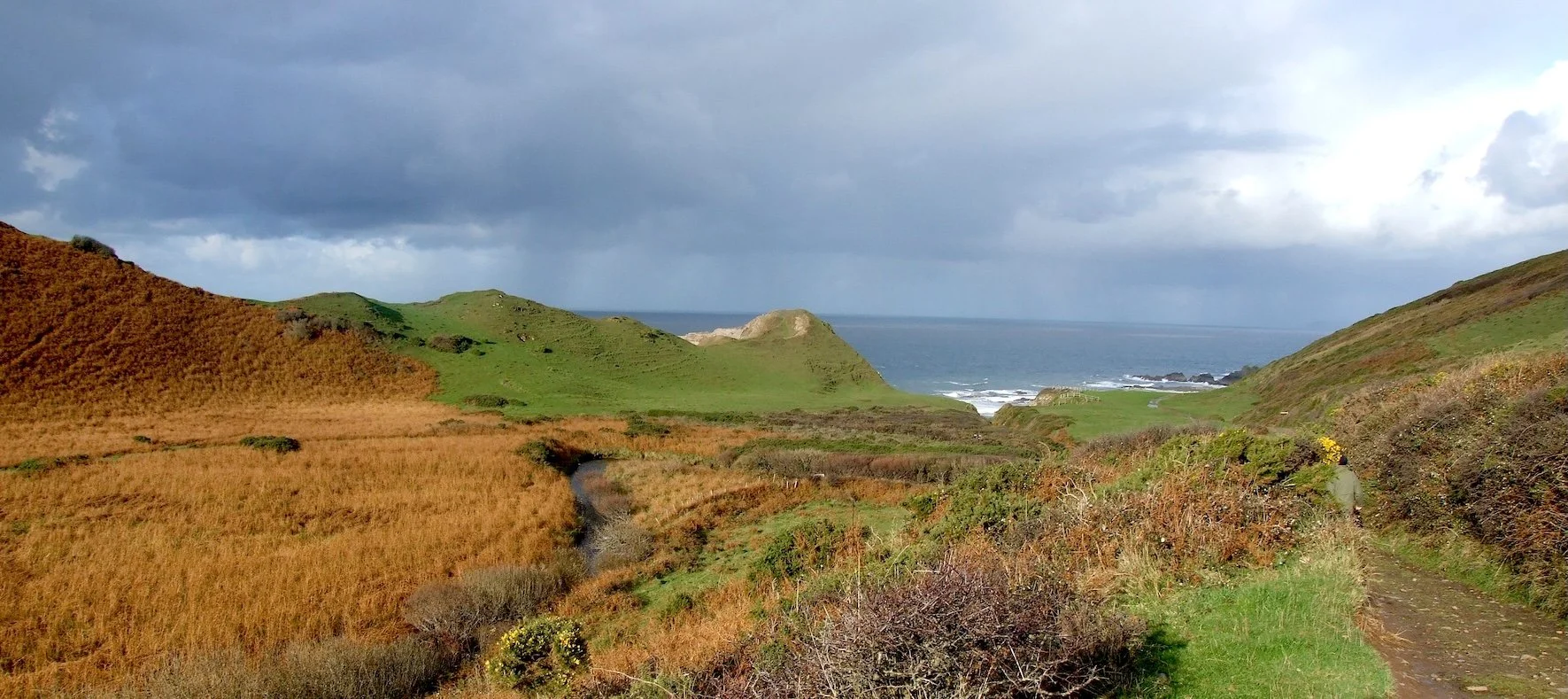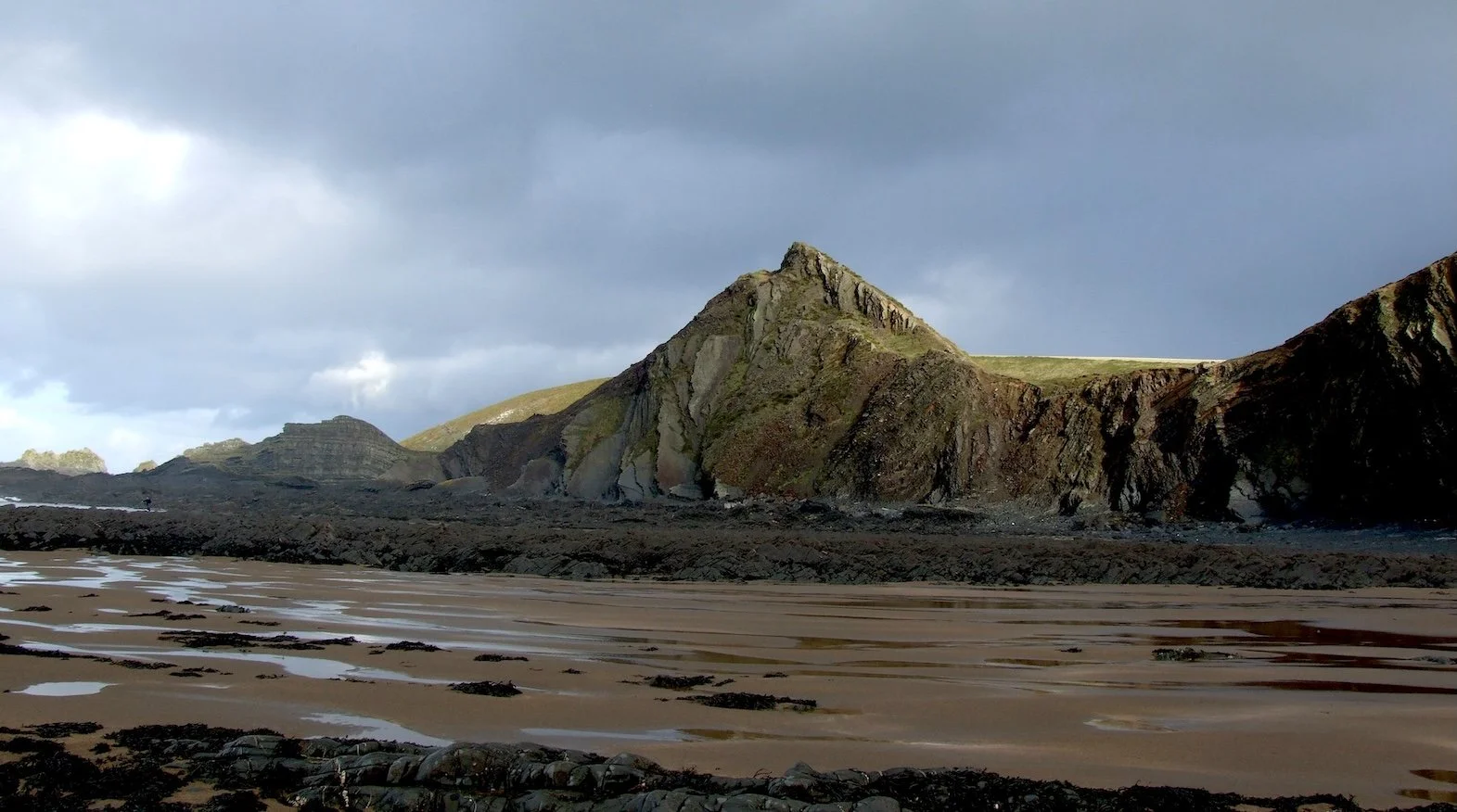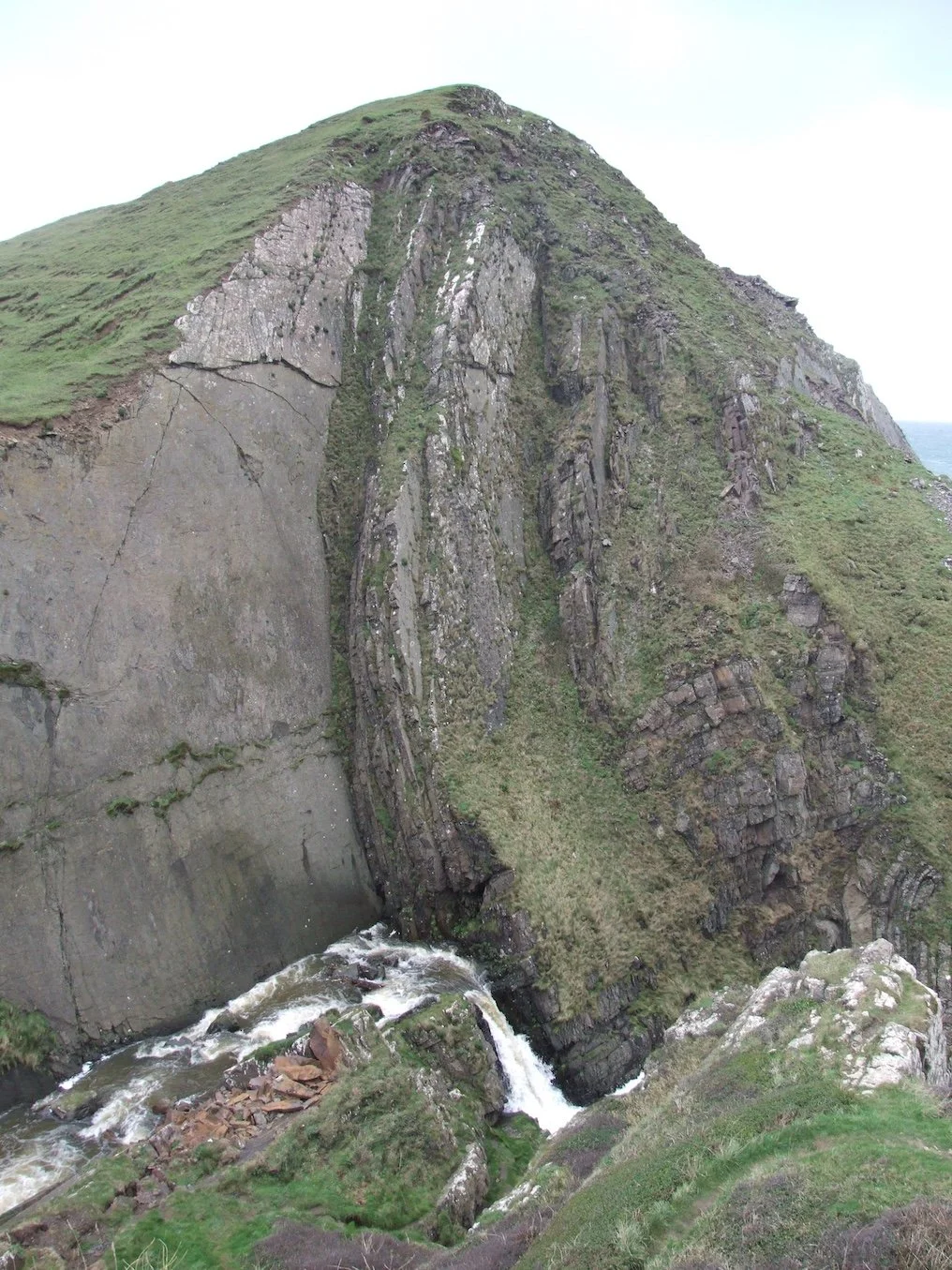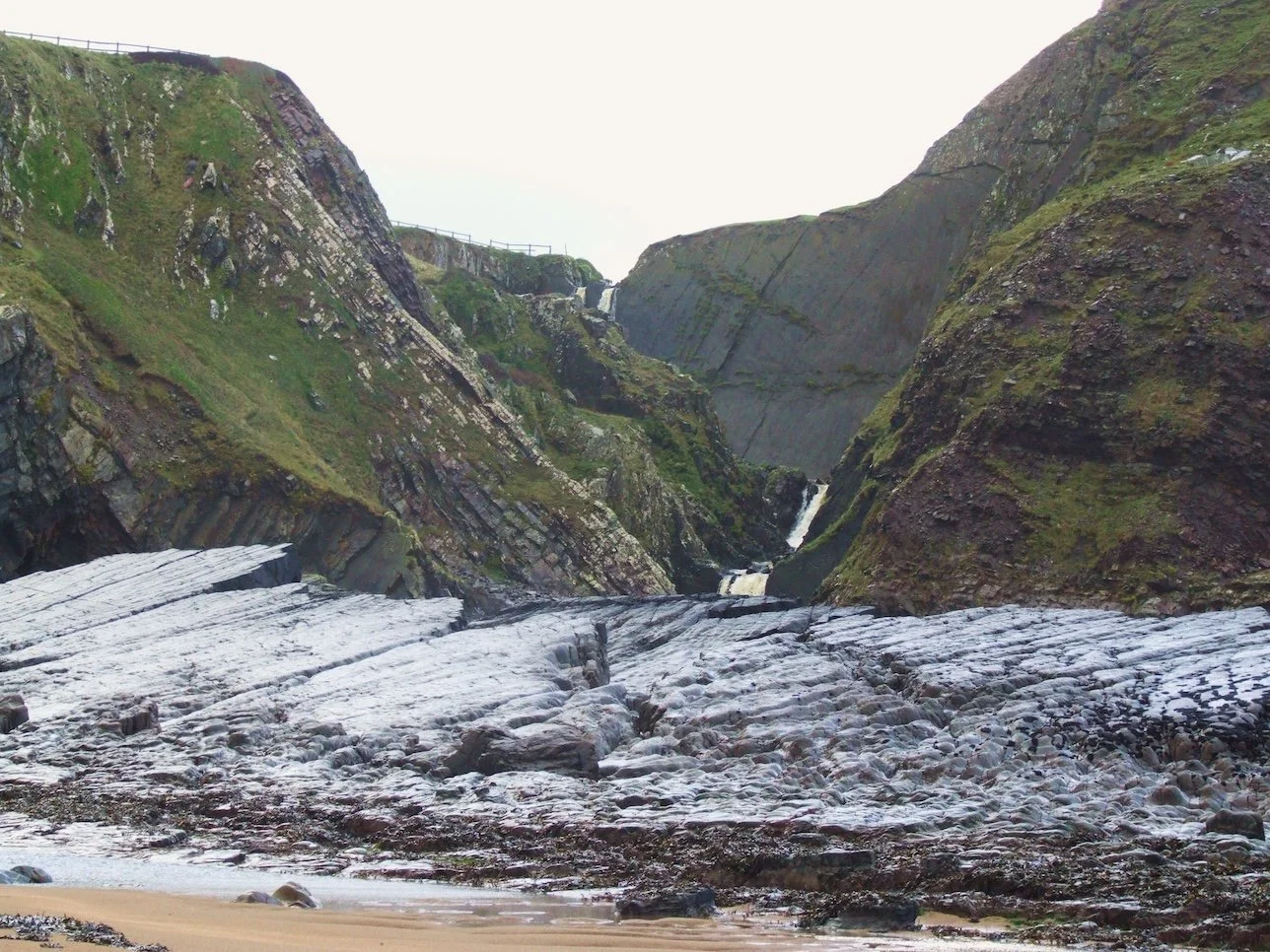Devon Secret Seasides: Speke’s Mill Mouth
Speke’s Mill Mouth – Devon's Hartland Peninsula
A True Secret Seaside in North Devon
Speke’s Mill Mouth has the complete kit of parts necessary to be named as one of the region’s great secret seasides. You can only access it by descending a wobbly looking staircase that looms next door to a giant waterfall – and the area boasts rare butterflies, a long lost Swannery which went the same way as a saint’s chapel and a herd of wild horses.
That list alone puts it firmly into our top-20 list desirable coastal locations, but when you learn that this little bit of the littoral was once described by the Ancient Greek scholar, Ptolemy, as the “Promontory of Hercules”, then you know we are talking about somewhere very special indeed.
Geography of the Hartland Coast
Let’s get a geographic handle on all this salty excitement… The west facing shore of Hartland Peninsula, as it is sometimes inaccurately known, represents a giant roller-coaster created by hills and valleys that run at right-angles to the coast.
South of Hartland Quay’s east-west pointing ridge, which is crowned by the small village of Stoke, there are a couple such valleys. The more northerly splits in two as it reaches the sea, because a remarkable knoll called St Catherine’s Tor gets in the way.
The southerly valley seems almost minded to make a similar division, thanks to an intervening ridge called Swansford Hill, but its wayward coombe doesn’t quite break through to make its own exits seawards, although one day it will when they’ve been sufficiently eroded.
Speke’sMill Mouth towards St Catherine’s Tor
The Dramatic Speke’s Mill Waterfall
The main valley does, however, continue westwards to suddenly end in a void. And I mean very suddenly. The void in question is marked by a smooth wall of cliff than tumbles vertically some 120 feet to the shore.
In doing so it rudely and abruptly interrupts the flow of the Speke Mill stream that runs down from a riverside hamlet beneath a place called Warrior’s Bridge. The stream has no choice. It must fall. And it does so with a sublime and scary 80-foot milky-ness which sees it hiss down on to rocks far below, then tumble through more crags down to the shore. When it’s in full flow, this waterfall deserves a place on Devon’s list of finest natural phenomena.
The shore beneath is our secret seaside – and it is a beach which, one assumes, was far less dramatic thousands of years ago before the cliffs were eroded to create what is now a hanging valley.
Walking Routes and Views
If you want to visit the area I’d recommend starting inland where the landscape is tame and sheltered and quite different from the ruggedness of the coast which you’ll walk down to. Like so many of the inner corners of these wooded coombes that punctuate the North Devon-Cornwall border you could be somewhere deep in Exmoor National Park. But that’s to ignore the big bald hilltops that burgeon all around and the wild, wild coast that lies so close just downstream.
A track conveys you from the cosy confines of Docton Mill, where the nearest paved road is, towards the sea coast. But just before it reaches the cliffs there’s a chance to swing left and cross a footbridge over the stream – and the point of taking this detour is that you can climb the spur at the end of Swansford Hill which will give you the most tremendous view of Speke’s Mill Mouth and of distant St Catherine’s Tor.
Speke’s Mill Mouth Valley
Back on the northern side of the stream that’s about to fling itself into the abyss, you’ll find the aforementioned wooden staircase. It’s just beyond the waterfall and it will allow you to make the final descent with relative ease.
A Beach for Tide-Watchers
Twice have I been to this most lonely of beaches – this week when the tide was in and the Atlantic was crashing on to the rocks, and several years ago when it was out, revealing a large and beautiful stretch of golden sand.
Obviously, I’d recommend checking the tide tables and experiencing Speke’s Mill Mouth on the ebb rather than the flow – and I’d also recommend making a further detour, while you are in these remote parts, to explore remarkable St Catherine’s Tor.
St Catherine’s Tor and the Lost Swannery
It is one of the most remarkable protuberances to be found anywhere along the South West Coast Path. The tor looks like a miniature mountain that has been cut in half – and its location is surprising and unexpected.
St Catherine's Tor
The inland flanks of the knoll are surrounded by a flat field which looks somehow manmade – indeed, it is three-parts ringed by an impressive wall. For years this unusual landscape feature bewildered me – the flat field with its rampart looked so unlikely and at odds with its wilder surroundings - but it was Sir Hugh Stucley, owner of the Hartland Abbey estate in which this remarkable landscape is situated, who cleared the conundrum up for me…
“The monks who had the abbey built a swannery there,” he told me. “There used to be a couple of fields, but actually they were the bottom of what was a shallow lake formed by a dam. The monks used it for fish, and of course they’d also eat the swans – but it all fell into disuse after the Dissolution in 1539.”
Sir Hugh went on: “On top of St Catherine’s Tor there was a chapel and there used to be a track leading up there. I think the chapel lasted a lot longer than the swannery lake because we have records of my great uncle, who died in 1911, taking a horse and cart up there.”
Wildlife and Conservation
Sir Hugh is rightfully proud of the conservation work that he’s been pursuing in the area: “We’re trying to reintroduce the large blue butterfly which used to be here until the habitat was changed,” he said. “Up until the 1950s there were a lot of rabbits out on the sea cliffs around St Catherine’s Tor and there was also a herd of more-or-less wild horses. They were herded up once a year and some were taken for meat. People were still hungry back then after the War - but then keeping horses for meat became unthinkable.
“The point was that the rabbits and horses used to keep the grasses and other plants down – which suited the large blue butterfly. But then the rabbits got myxomatosis and the wild horses went – so the result was that the gorse, in particular, choked the area and grew up to shoulder height.
“We’ve been trying to get it back as it was, and I must say this last summer the area looked a picture with plants like wild thyme growing.”
Speke’s Mill Mouth
A Place of Saints and Ancient History
One would like to think that St Catherine would be pleased by the care now being taken of her remote bit of coast. She is supposed to have meditated a while on top of the Tor and St Nectan, the Celtic saint, is also believed to have made his hermitage somewhere near here. There are also references to the fact that remains of a Roman villa have been found close by.
Who knows, the local Roman gentry may have been inspired to move to this wondrous place by Ptolemy’s description that was the “Promontory of Hercules”, stranger things have happen along our shores.













